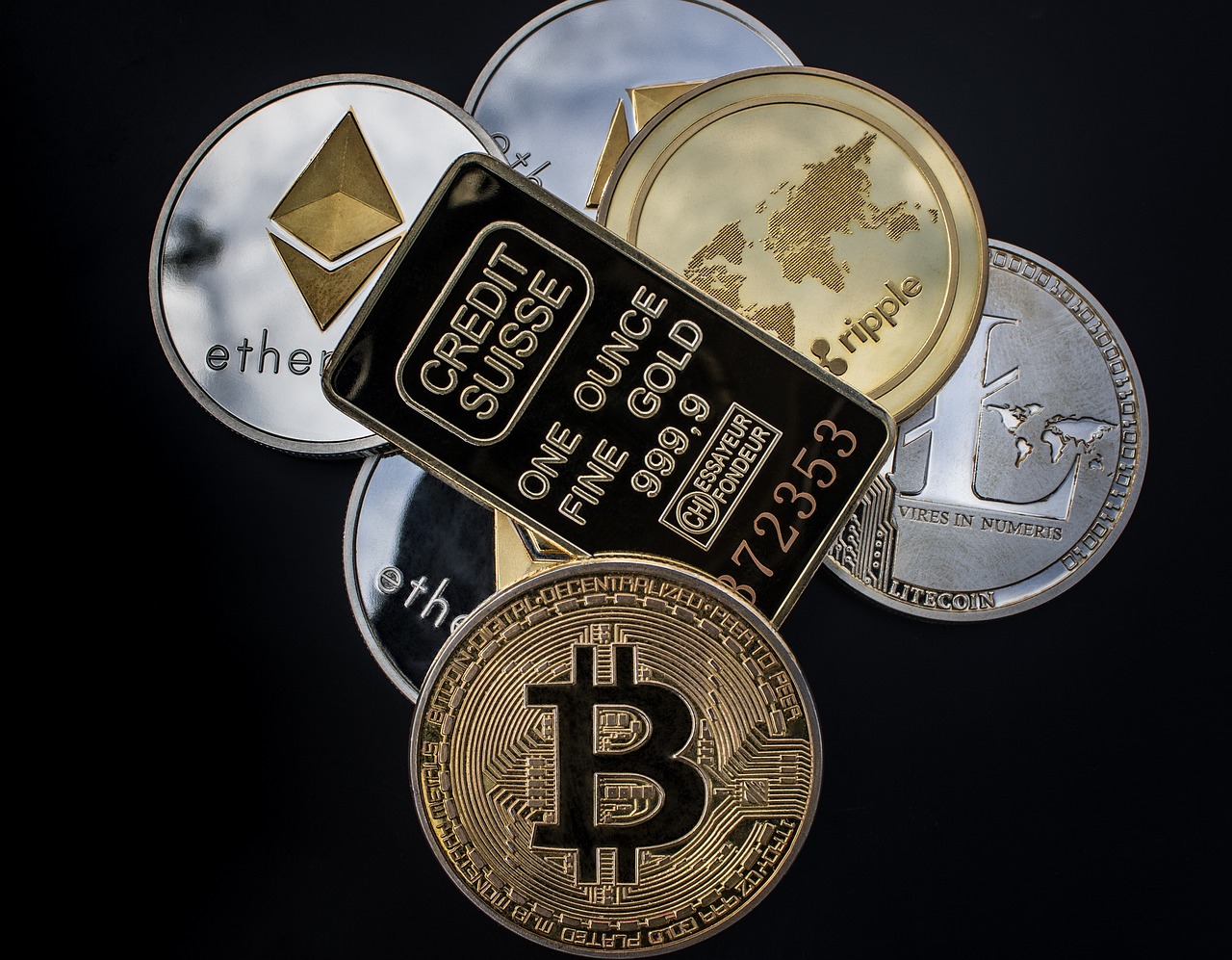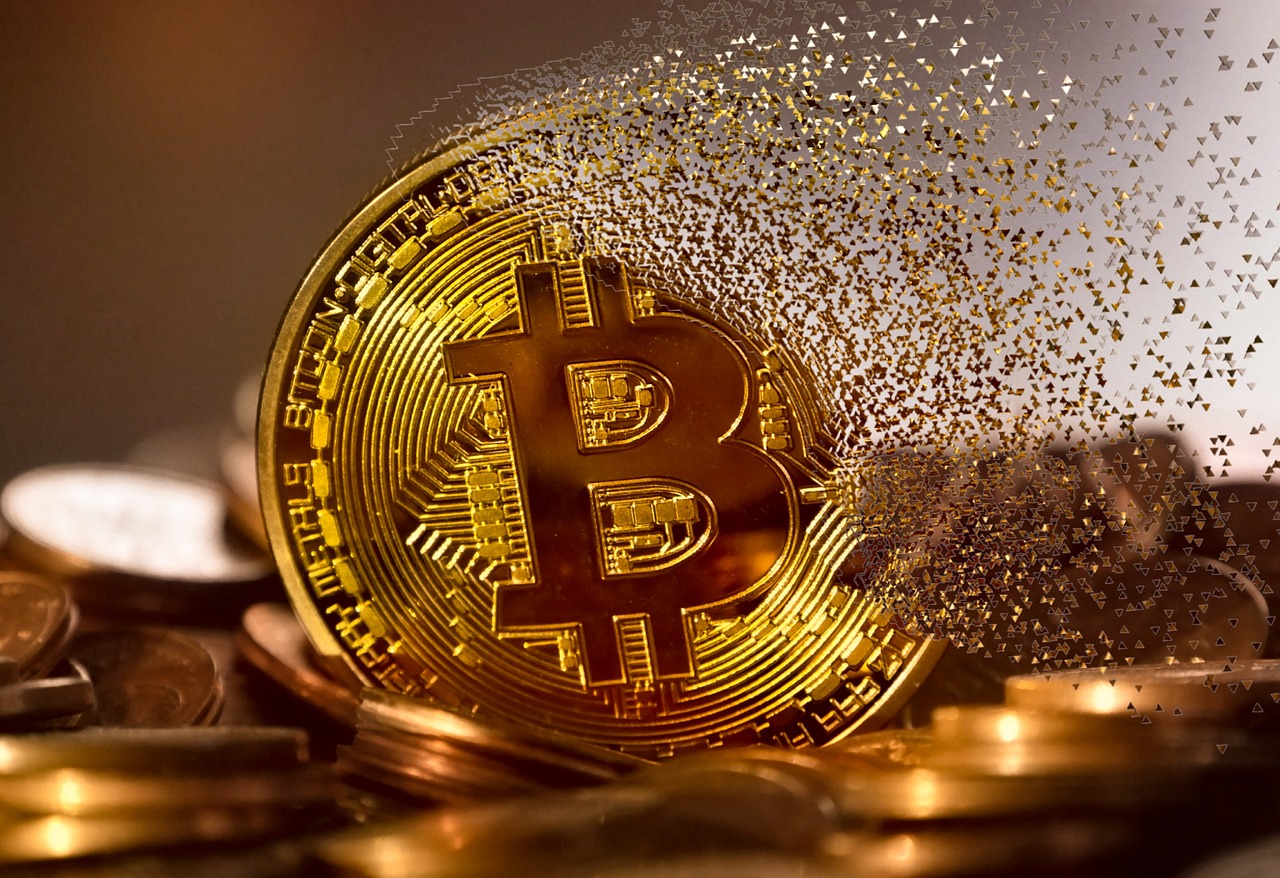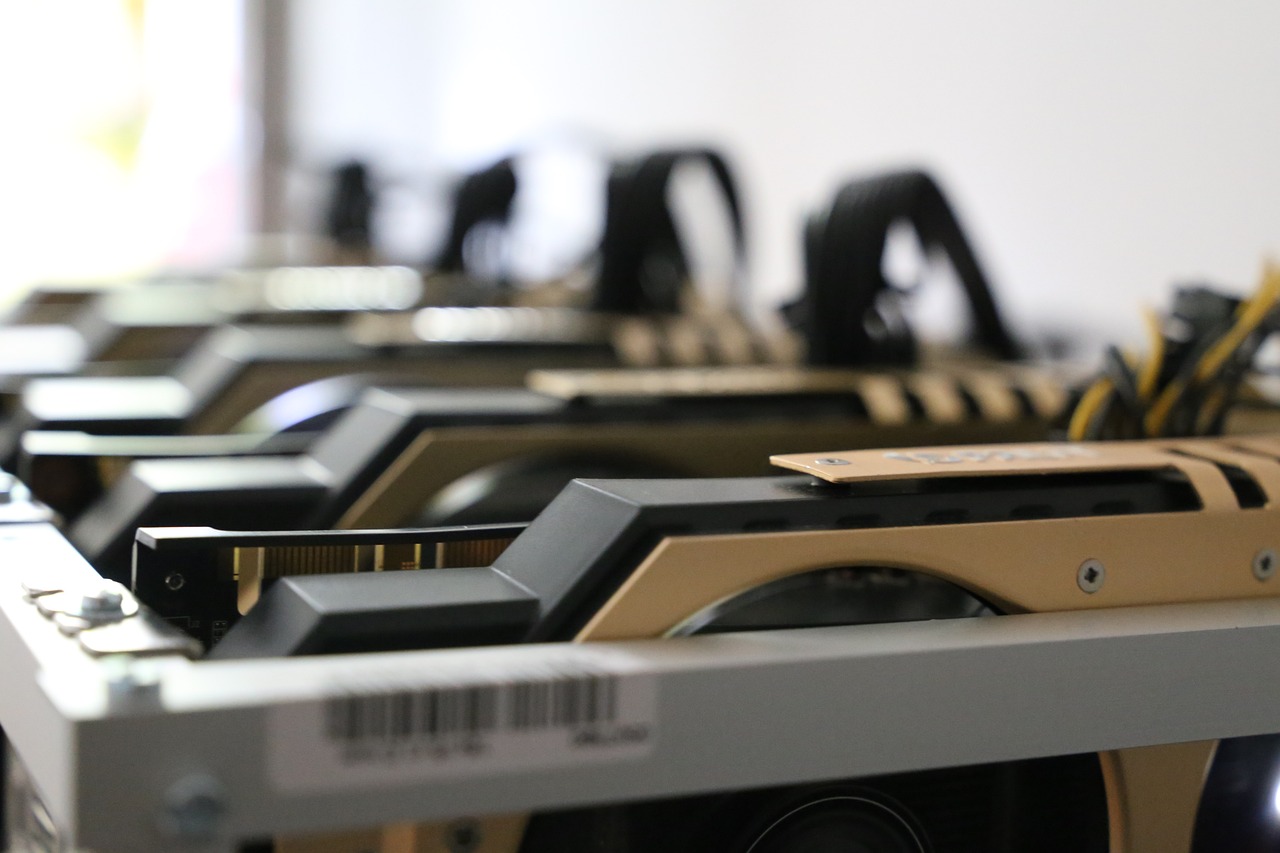Render Token - Decentralized GPU Rendering Explained
Have you ever found yourself waiting endlessly for a rendering task to finish? Or perhaps you've cringed at the thought of investing in expensive hardware just to keep up with the demands of digital content creation? Well, Render Token is here to shake things up! This innovative solution embraces the power of decentralization, allowing users to harness idle GPU resources scattered across the globe. In this article, we’ll dive deep into what Render Token is, how its technology works, and the transformative impact it has on the digital content creation industry.
At its core, Render Token is a cryptocurrency designed to facilitate decentralized GPU rendering. It enables users to tap into the untapped potential of idle GPUs, making rendering tasks not only more efficient but also significantly cost-effective. Imagine a world where artists and developers no longer need to invest heavily in hardware but can instead leverage the collective power of a global network of GPUs. This is the promise of Render Token, transforming the way we think about rendering in the digital landscape.
The magic of Render Token lies in its unique integration of blockchain technology with GPU rendering. This combination not only ensures secure transactions but also optimizes resource allocation, revolutionizing how rendering tasks are managed in a decentralized environment. By using Render Token, users can enjoy a seamless experience, free from the constraints of traditional rendering methods.
Blockchain technology is the backbone of Render Token, providing a transparent and secure framework for all transactions. This means that every party involved in rendering tasks can trust the system without needing intermediaries. In a world where trust can often be a scarce commodity, Render Token offers a refreshing alternative, allowing users to focus on creativity rather than logistics.
One of the standout features of Render Token is its use of smart contracts. These automated agreements facilitate seamless interactions between users and render nodes, ensuring that all conditions are met before services are rendered. This not only enhances efficiency but also significantly reduces the likelihood of disputes. Think of smart contracts as the reliable middlemen that take care of the nitty-gritty details, allowing artists to focus on what they do best: creating stunning visuals.
Decentralization is a game-changer in the rendering process. By minimizing reliance on centralized servers, Render Token improves scalability and resilience. This leads to lower costs and increased accessibility for users worldwide. Whether you're a small indie developer or a large studio, the benefits of decentralized rendering are clear: more flexibility, lower overhead, and the ability to scale resources according to demand.
Render Token isn't just a theoretical concept; it has real-world applications across various fields. From animation and visual effects to architectural visualization, this technology empowers artists and developers to efficiently render high-quality graphics without the burden of heavy upfront hardware investments. Imagine being able to create stunning animations or intricate architectural designs without breaking the bank—this is the future that Render Token promises!
Utilizing Render Token comes with a plethora of advantages that make it an attractive option for content creators. Here are just a few highlights:
By tapping into idle GPU resources, Render Token significantly reduces the costs associated with traditional rendering methods. Users only pay for the rendering power they actually use, eliminating the need for costly hardware purchases. This cost efficiency allows creators to allocate their budgets more effectively, investing in creativity rather than infrastructure.
Render Token enhances rendering speed by distributing tasks across a decentralized network of GPUs. This means projects can be completed faster, allowing creators to meet tight deadlines without sacrificing quality. Plus, if demand spikes, users can easily scale their resources up or down, ensuring they always have the power they need at their fingertips.
- What is the primary purpose of Render Token? Render Token is designed to facilitate decentralized GPU rendering, allowing users to utilize idle GPU power for rendering tasks.
- How does blockchain technology enhance Render Token? Blockchain provides a secure and transparent framework for transactions, ensuring trust among users without intermediaries.
- Can anyone use Render Token for rendering tasks? Yes! Render Token is accessible to anyone looking to leverage GPU resources for rendering, from individual artists to large studios.
- What are the cost benefits of using Render Token? Users only pay for the rendering power they actually use, significantly reducing costs compared to traditional methods.

What is Render Token?
Render Token is a revolutionary cryptocurrency designed specifically for the realm of decentralized GPU rendering. Imagine a world where artists, animators, and developers can tap into a vast pool of idle GPU power scattered across the globe. This is precisely what Render Token offers. By allowing users to leverage unused graphics processing units (GPUs) for rendering tasks, it enhances efficiency and dramatically reduces costs associated with digital content creation.
In simpler terms, think of Render Token as a marketplace where individuals and companies can rent out their excess GPU capacity to those in need of powerful rendering capabilities. This decentralized approach not only democratizes access to high-quality rendering resources but also transforms the way we think about rendering in the digital space. Instead of relying solely on expensive hardware and centralized servers, users can now utilize a network of GPUs that are readily available, thus creating a more flexible and cost-effective solution.
Furthermore, Render Token operates on a unique economic model. Users pay for rendering services using the Render Token currency, which facilitates transactions between those providing GPU resources and those requiring them. This model ensures that everyone benefits: GPU owners earn tokens for their contributions, while content creators save on costs and time. The entire process is streamlined and efficient, making it an attractive option for anyone involved in digital content creation.
To summarize, Render Token is not just a cryptocurrency; it represents a fundamental shift in how rendering tasks are approached in the digital content industry. With its decentralized framework, it opens up new avenues for creativity and collaboration, allowing users to focus on what they do best—creating stunning visuals—while leaving the heavy lifting of rendering to a network of powerful GPUs.

The Technology Behind Render Token
The technology behind Render Token is a fascinating blend of cutting-edge innovations that work together to create a decentralized platform for GPU rendering. At its core, Render Token leverages the power of blockchain technology and GPU processing to transform the way digital content is created and rendered. Imagine a world where artists and developers can tap into a vast pool of idle GPU resources, just like borrowing a book from a library, but instead, they are borrowing computational power. This not only democratizes access to high-performance rendering but also ensures that the process is efficient and cost-effective.
One of the standout features of Render Token's technology is its use of smart contracts. These self-executing contracts automate the agreements between users and render nodes, which are the individual GPU resources available on the network. When a user submits a rendering job, a smart contract is created to outline the terms of the job, including payment, deadlines, and quality expectations. This eliminates the need for intermediaries, reducing the chances of disputes and ensuring that both parties are on the same page. Think of it as having a digital handshake that guarantees trust and transparency.
The integration of blockchain technology is what truly sets Render Token apart from traditional rendering solutions. By utilizing a decentralized ledger, all transactions related to rendering jobs are recorded securely and transparently. This means that every user can verify the integrity of the process without having to rely on a central authority. It’s similar to how a public library keeps track of borrowed books; everyone can see the records, ensuring accountability. This level of transparency builds trust among users and encourages more people to participate in the network.
Decentralization is another critical aspect of Render Token's technology. By removing the reliance on centralized servers, the platform enhances scalability and resilience. In traditional rendering setups, if a server goes down, the entire operation can come to a halt. However, with Render Token, the workload is distributed across a network of GPUs, making it far less susceptible to single points of failure. This means that users can access rendering resources from anywhere in the world, creating a truly global marketplace for GPU power.
Furthermore, the decentralized nature of Render Token leads to lower costs for users. By utilizing idle GPU resources, content creators can save significantly compared to investing in expensive hardware. This opens the door for smaller studios and independent artists to produce high-quality graphics without the hefty price tag that usually comes with traditional rendering methods. It’s like having access to a community tool shed where everyone can borrow tools instead of each person having to buy their own.
Render Token's technology has a wide array of applications across various industries. From animation and visual effects to architectural visualization, the possibilities are virtually limitless. For instance, an animator working on a short film can use Render Token to render complex scenes without needing to invest in a powerful workstation. Instead, they can simply submit their rendering jobs and pay for the resources they consume. This flexibility allows artists and developers to focus more on their creative processes rather than worrying about hardware limitations.
In summary, the technology behind Render Token is a groundbreaking approach that combines blockchain and GPU rendering in a way that enhances efficiency, reduces costs, and democratizes access to powerful rendering capabilities. With smart contracts ensuring trust and decentralization providing resilience, Render Token is poised to revolutionize the digital content creation landscape.

Blockchain Integration
When we talk about Render Token, we can’t overlook the pivotal role that blockchain technology plays in its framework. Imagine a world where every transaction is transparent, secure, and free from the clutches of intermediaries. That’s precisely what blockchain brings to the table. By integrating blockchain, Render Token ensures that every user, whether a creator or a render node, can trust the system implicitly. No more worrying about fraud or mismanagement; the decentralized nature of blockchain means that everyone can verify transactions independently.
At its core, the blockchain acts as a digital ledger, recording every transaction in a manner that is immutable and publicly accessible. This means that once a rendering job is completed and paid for, the details are etched into the blockchain forever. This level of transparency not only builds trust among users but also fosters a sense of community, as everyone involved can track the flow of resources and payments.
Furthermore, the integration of smart contracts enhances this trust factor even more. Think of smart contracts as self-executing agreements that automatically enforce the terms and conditions agreed upon by both parties. For instance, if a creator wants to render a high-quality animation, they can set up a smart contract that outlines the payment, the rendering specifications, and the delivery timeline. Once the render node fulfills its part of the deal, the payment is automatically released. This eliminates the need for manual intervention, reducing the chances of disputes and ensuring that both parties get what they bargained for.
In addition to transparency and automation, blockchain integration also provides a robust security framework. Each transaction is encrypted and linked to the previous transaction, creating a chain of blocks that is nearly impossible to alter. This means that users can feel confident that their data and assets are safe from potential breaches or hacks.
To summarize, the integration of blockchain technology into Render Token is not just a fancy add-on; it’s a foundational element that transforms the rendering process. Here are some key benefits:
- Transparency: All transactions are visible and verifiable.
- Security: Encrypted transactions ensure data integrity.
- Trust: Eliminates the need for intermediaries, fostering direct relationships.
- Efficiency: Smart contracts streamline operations and reduce disputes.
With these features, Render Token is not only revolutionizing the way rendering tasks are managed but is also setting a new standard for trust and efficiency in the digital content creation industry. As we move forward, it’s exciting to think about how this technology will continue to evolve and shape the future of rendering.
1. What is Render Token?
Render Token is a decentralized cryptocurrency that enables users to utilize idle GPU power for rendering tasks, making the process more efficient and cost-effective.
2. How does blockchain enhance Render Token?
Blockchain provides a secure and transparent framework for transactions, ensuring trust among users and eliminating the need for intermediaries.
3. What are smart contracts?
Smart contracts are self-executing agreements that automate the execution of terms between users and render nodes, enhancing efficiency and reducing disputes.
4. What are the benefits of decentralization in rendering?
Decentralization reduces reliance on centralized servers, improves scalability, lowers costs, and increases accessibility for users worldwide.
5. What industries can benefit from Render Token?
Render Token can be beneficial in various fields, including animation, visual effects, and architectural visualization, allowing creators to render high-quality graphics without heavy investments in hardware.

Smart Contracts
Smart contracts are the backbone of the Render Token ecosystem, acting as digital agreements that automatically execute when predefined conditions are met. Imagine them as self-operating vending machines: you insert your coins, make your selection, and the machine delivers your snack without needing a store clerk. Similarly, smart contracts facilitate seamless interactions between users and render nodes, eliminating the need for intermediaries and manual oversight. This automation not only speeds up the rendering process but also enhances trust among participants, as every transaction is recorded on the blockchain, creating an immutable history.
In the world of decentralized GPU rendering, smart contracts play several pivotal roles:
- Automated Execution: The conditions set within a smart contract trigger actions automatically, ensuring that once a user submits a rendering request, the process initiates without delay.
- Transparency: Since all transactions are recorded on the blockchain, users can easily verify the status of their rendering jobs and the associated costs, fostering a sense of security.
- Dispute Resolution: In the rare case of disagreements, the terms of the smart contract provide a clear framework for resolution, minimizing conflicts and enhancing user confidence in the system.
Let’s break down how smart contracts work in the context of Render Token:
| Step | Description |
|---|---|
| 1. Agreement Creation | Users create a smart contract by defining the rendering task, specifying the GPU resources needed, and setting payment terms. |
| 2. Task Submission | The smart contract is deployed on the blockchain, and the rendering task is submitted to the network. |
| 3. Resource Allocation | Available render nodes automatically pick up the task based on the defined criteria, ensuring efficient resource allocation. |
| 4. Execution and Payment | Once the rendering is complete, the smart contract executes payment to the render node, and the user receives the rendered output. |
This level of automation not only streamlines the rendering process but also empowers creators to focus on their art rather than getting bogged down by administrative tasks. By leveraging smart contracts, Render Token ensures that both artists and developers can engage in a more efficient, transparent, and trustworthy rendering environment. In essence, smart contracts transform the way digital content is produced, paving the way for a new era of creativity powered by decentralized technology.
What are smart contracts?
Smart contracts are self-executing contracts with the terms of the agreement directly written into code. They automatically enforce and execute the terms once conditions are met.
How do smart contracts enhance security?
Smart contracts operate on blockchain technology, which is inherently secure and immutable. This ensures that once a smart contract is deployed, it cannot be altered, providing a reliable framework for transactions.
Can smart contracts reduce costs?
Yes! By automating processes and eliminating intermediaries, smart contracts can significantly lower operational costs associated with traditional rendering methods.

Decentralization Benefits
The concept of decentralization in Render Token is not just a buzzword; it represents a profound shift in how we think about rendering tasks and resource management in the digital content creation industry. By distributing rendering processes across a vast network of GPUs, Render Token minimizes reliance on centralized servers, which often become bottlenecks in traditional rendering workflows. Imagine a bustling city where every building has its own power source instead of relying on a single power plant. This analogy perfectly illustrates the enhanced scalability and resilience that decentralization brings to rendering.
One of the most significant benefits of this decentralized approach is the **reduction in costs**. Traditional rendering can require hefty investments in high-performance hardware, which can be a barrier for many content creators. With Render Token, users can tap into idle GPU resources from around the globe, paying only for the rendering power they actually use. This democratizes access to high-quality rendering, allowing even small studios or independent artists to produce stunning visuals without crippling upfront costs.
Moreover, decentralization fosters a **more robust ecosystem**. In a centralized system, a single point of failure can lead to widespread disruptions. However, in a decentralized network, if one node goes down, others can seamlessly pick up the slack. This resilience enhances the reliability of rendering tasks, ensuring that projects can progress without significant delays. In essence, it’s like having a backup generator that kicks in automatically when the main power supply falters.
Additionally, by decentralizing rendering tasks, we open up a world of accessibility. Artists and developers from various corners of the globe can participate in the rendering process, contributing their idle GPU resources. This not only boosts the overall rendering capacity but also creates a **community-driven platform** where collaboration thrives. Imagine a global team of artists working together, where each can contribute their resources and skills, leading to richer and more diverse content creation.
In summary, the decentralization benefits of Render Token extend far beyond mere cost savings. They encompass increased scalability, improved reliability, and enhanced accessibility for users worldwide. By leveraging the power of decentralized GPU rendering, we are not just optimizing rendering tasks; we are fundamentally transforming the landscape of digital content creation.
- What is Render Token? Render Token is a cryptocurrency designed for decentralized GPU rendering, allowing users to utilize idle GPU power for rendering tasks.
- How does decentralization improve rendering? Decentralization reduces reliance on centralized servers, enhancing scalability, resilience, and cost efficiency.
- Can anyone participate in Render Token? Yes, artists and developers can contribute their idle GPU resources to the network, making rendering more accessible.
- What are the advantages of using Render Token? Advantages include cost savings, faster rendering times, and access to a global network of GPU resources.

Use Cases of Render Token
Render Token is not just a theoretical concept; it has real-world applications that are transforming the landscape of digital content creation. One of the most significant use cases is in the field of animation. Animators often require substantial rendering power to bring their characters and scenes to life. With Render Token, they can tap into a vast network of idle GPUs, allowing them to render complex animations without the need for expensive hardware investments. This democratizes the animation process, enabling even independent creators to produce high-quality work.
Another exciting application is in visual effects (VFX). The film and gaming industries rely heavily on VFX to create stunning visuals that captivate audiences. Traditionally, rendering these effects can be a time-consuming and costly endeavor. However, Render Token allows VFX artists to distribute their rendering tasks across a decentralized network, significantly speeding up the process. Imagine being able to render a high-octane explosion scene in a fraction of the time it would normally take—this is the power of Render Token.
Architectural visualization is yet another area where Render Token shines. Architects and designers often need to present their ideas in the most visually appealing way possible. By utilizing Render Token, they can create photorealistic renderings of their designs quickly and affordably. This not only enhances their presentations but also allows for real-time feedback and adjustments, leading to better final products.
The versatility of Render Token extends beyond just these fields. It can also be employed in virtual reality (VR) and augmented reality (AR) projects, where rendering high-quality graphics is crucial for an immersive experience. As VR and AR technologies continue to advance, the demand for efficient rendering solutions will only grow, making Render Token an invaluable tool for developers in these spaces.
In summary, the use cases for Render Token are diverse and impactful. Whether you're an animator, VFX artist, architect, or working in the burgeoning fields of VR and AR, Render Token provides a flexible, cost-effective solution that can significantly enhance productivity and creativity. The future of digital content creation is bright, and Render Token is at the forefront of this exciting evolution.
- What is Render Token?
Render Token is a cryptocurrency that facilitates decentralized GPU rendering, allowing users to utilize idle GPU resources for rendering tasks. - How does Render Token improve rendering efficiency?
By distributing rendering tasks across a network of GPUs, Render Token enhances speed and reduces costs associated with traditional rendering methods. - What industries can benefit from Render Token?
Industries such as animation, visual effects, architectural visualization, and virtual/augmented reality can all leverage Render Token for their rendering needs. - Are there any cost savings associated with using Render Token?
Yes, Render Token allows users to pay only for the GPU power they actually use, leading to significant cost reductions compared to traditional methods.

Advantages of Using Render Token
Utilizing Render Token offers a plethora of advantages that can significantly transform the landscape of digital content creation. One of the most compelling benefits is cost efficiency. Traditional rendering methods often require hefty investments in high-end hardware, which can be a major barrier for many artists and developers. However, by leveraging idle GPU resources from a global network, users can dramatically reduce their rendering costs. This means you only pay for what you use, making it an economical choice for both small studios and independent creators.
Moreover, the speed at which rendering tasks are completed is another standout feature of Render Token. With tasks distributed across a decentralized network of GPUs, projects can be completed at a fraction of the time it would take using conventional methods. Imagine trying to bake a cake in a single oven versus sharing the workload with multiple ovens; the latter not only speeds up the process but also allows for larger batches. This analogy perfectly illustrates how Render Token enhances rendering speed and scalability.
Furthermore, the accessibility provided by Render Token is a game-changer. Artists and developers from various corners of the globe can tap into this network without needing to invest in expensive infrastructure. This democratization of rendering power means that talented individuals can create stunning visuals without the financial strain that typically accompanies high-quality rendering. Whether you're an aspiring animator or an established studio, the ability to access a vast pool of GPU resources opens up new avenues for creativity.
In addition to these benefits, the decentralized nature of Render Token also enhances security. By eliminating the need for centralized servers, the risk of data breaches and server failures is significantly minimized. Users can trust that their projects are being handled securely, allowing them to focus on what they do best: creating.
Lastly, Render Token fosters a sense of community among users. With a shared goal of enhancing digital content creation, artists and developers can collaborate, share resources, and even offer feedback on each other's work. This collaborative spirit can lead to innovative ideas and techniques that push the boundaries of what is possible in rendering.
- What is Render Token? Render Token is a cryptocurrency that facilitates decentralized GPU rendering, allowing users to leverage idle GPU power for rendering tasks.
- How does Render Token save costs? By utilizing idle GPU resources, users only pay for the rendering power they actually use, significantly reducing costs associated with traditional rendering methods.
- What industries can benefit from Render Token? Industries such as animation, visual effects, and architectural visualization can greatly benefit from the efficiency and cost savings offered by Render Token.
- Is Render Token secure? Yes, the integration of blockchain technology ensures secure transactions and minimizes the risk of data breaches.

Cost Efficiency
When it comes to rendering costs, Render Token stands out as a game-changer. Traditional rendering methods often require hefty investments in expensive hardware and software, not to mention the ongoing maintenance costs. However, with Render Token, users can tap into a vast network of idle GPU resources, enabling them to pay only for the rendering power they actually use. This model not only reduces the financial burden but also allows for greater flexibility in budgeting for projects.
Imagine you're a digital artist working on a high-quality animation project. Instead of spending thousands of dollars on a powerful workstation that you might only use sporadically, you can leverage the power of Render Token. By connecting to a decentralized network of GPUs, you can access the rendering power you need, when you need it, and only pay for what you consume. This is akin to renting a car instead of buying one; you save money and have the flexibility to choose the best option for your specific requirements.
Moreover, the pricing structure of Render Token is designed to be transparent and competitive. Users can compare costs across different rendering nodes, ensuring they are getting the best deal. This competitive landscape encourages providers to offer better rates and services, resulting in an overall reduction in costs for everyone involved.
To illustrate the potential savings, consider the following table that compares traditional rendering costs with those using Render Token:
| Rendering Method | Initial Investment | Ongoing Costs | Cost per Project |
|---|---|---|---|
| Traditional Rendering | $5,000 - $10,000 | $200 - $500/month | $1,000 - $3,000 |
| Render Token | $0 (No initial investment) | $0 (Pay-per-use) | $100 - $500 |
As you can see, the cost efficiency of using Render Token is undeniable. Not only does it eliminate the need for a substantial upfront investment, but it also allows for a pay-as-you-go model that can adapt to the fluctuating demands of digital content creation. This flexibility is crucial in an industry where project scopes can change rapidly, and budgets must be managed carefully.
In summary, Render Token's approach to cost efficiency reshapes the financial landscape of rendering. By utilizing decentralized GPU resources, artists and developers can significantly cut costs while maintaining high-quality output. This innovative model ensures that anyone, regardless of their budget, can access the tools they need to bring their creative visions to life.
- What is Render Token?
Render Token is a cryptocurrency that enables decentralized GPU rendering, allowing users to utilize idle GPU power for rendering tasks. - How does Render Token save costs?
By tapping into a global network of idle GPUs, users only pay for the rendering power they actually use, eliminating the need for heavy upfront investments. - Can anyone use Render Token?
Yes! Render Token is accessible to anyone looking to render digital content, whether they are independent artists or large studios. - What are the benefits of using decentralized rendering?
Decentralized rendering improves scalability, reduces costs, and enhances accessibility, making it easier for users to manage rendering tasks.

Speed and Scalability
When it comes to rendering, speed is often a game-changer. Imagine waiting hours or even days for a single frame to render; it can feel like watching paint dry! With Render Token, this waiting game is transformed into a swift, efficient process. By utilizing a decentralized network of GPUs, tasks are distributed intelligently across multiple nodes, allowing for a dramatic increase in rendering speed. This means that what used to take days can now be completed in mere hours or even minutes, depending on the complexity of the project.
Scalability is another key factor that sets Render Token apart from traditional rendering solutions. In a world where project demands can fluctuate wildly, having the ability to scale resources on-the-fly is invaluable. Whether you’re an indie game developer or a large studio, Render Token allows you to tap into a global pool of GPU resources, meaning you can easily ramp up your rendering capacity during peak times and scale back when demand is lower. This flexibility not only helps in managing costs but also ensures that deadlines are met without compromising on quality.
Furthermore, the decentralized nature of Render Token means that you are not limited by the constraints of a single server or data center. This opens up a world of possibilities, as you can access a vast array of rendering power from anywhere in the world. The result? A more resilient rendering process that is less prone to bottlenecks and downtime. With so many contributors in the network, the system is designed to handle loads efficiently, making it a reliable choice for content creators who can’t afford delays.
To illustrate the impact of speed and scalability, consider the following comparison:
| Rendering Method | Time to Render (1 Frame) | Scalability |
|---|---|---|
| Traditional Rendering | 24 hours | Limited |
| Render Token | 1 hour | Highly Scalable |
This table clearly shows how Render Token not only speeds up the rendering process but also offers a level of scalability that traditional methods simply can't match. As digital content continues to evolve, the ability to render quickly and efficiently will become increasingly crucial. With Render Token, the future of rendering is not just fast; it’s smart, adaptable, and ready for anything.
- What is Render Token? - Render Token is a cryptocurrency that enables decentralized GPU rendering, allowing users to utilize idle GPU resources for rendering tasks.
- How does Render Token improve rendering speed? - By distributing rendering tasks across a global network of GPUs, Render Token significantly reduces the time required to complete rendering projects.
- What are the benefits of decentralization in rendering? - Decentralization enhances scalability, reduces costs, and minimizes reliance on centralized servers, making rendering more efficient and accessible.
Frequently Asked Questions
- What is Render Token?
Render Token is a cryptocurrency designed for decentralized GPU rendering. It enables users to utilize idle GPU power from various sources, making the rendering process more efficient and cost-effective for digital content creators.
- How does Render Token work?
Render Token operates on a blockchain framework that ensures secure transactions and resource allocation. By leveraging smart contracts, it automates agreements between users and rendering nodes, facilitating smooth interactions and reducing potential disputes.
- What are the benefits of using Render Token?
Using Render Token offers several advantages, including significant cost savings by paying only for the rendering power you use, faster rendering times through a decentralized network of GPUs, and improved scalability to meet varying project demands.
- Can Render Token be used for various types of rendering?
Absolutely! Render Token is versatile and can be applied in multiple fields such as animation, visual effects, and architectural visualization, allowing artists and developers to create high-quality graphics without hefty investments in hardware.
- Is Render Token secure?
Yes, Render Token leverages blockchain technology, which provides a transparent and secure environment for all transactions. This means that all parties can trust the system without needing intermediaries, enhancing overall security.
- How does decentralization benefit the rendering process?
Decentralization minimizes the reliance on centralized servers, leading to improved scalability and resilience. This not only reduces costs but also increases accessibility for users worldwide, making rendering more efficient and user-friendly.
- What industries can benefit from Render Token?
Render Token can significantly benefit industries such as gaming, film production, architectural design, and virtual reality, where high-quality rendering is crucial but often comes with high costs and resource demands.



















